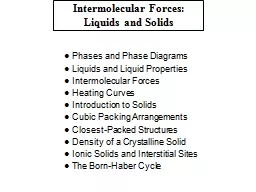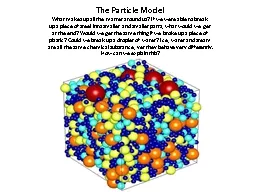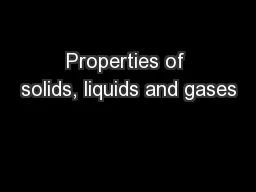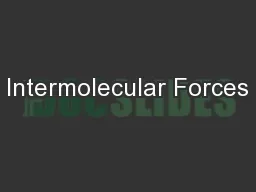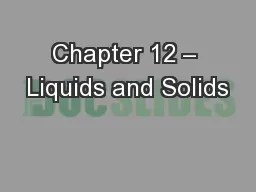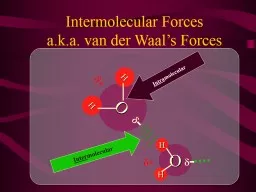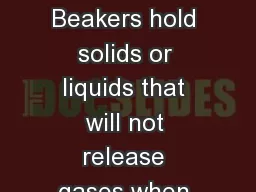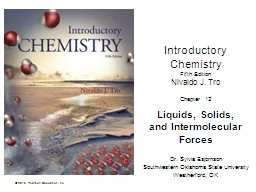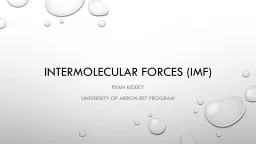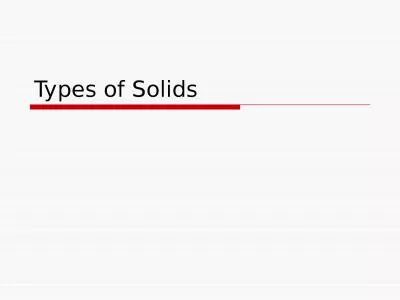PPT-Intermolecular Forces: Liquids and Solids
Author : marina-yarberry | Published Date : 2016-11-18
Phases and Phase Diagrams Liquids and Liquid Properties Intermolecular Forces Heating Curves Introduction to Solids Cubic Packing Arrangements ClosestPacked
Presentation Embed Code
Download Presentation
Download Presentation The PPT/PDF document "Intermolecular Forces: Liquids and Solid..." is the property of its rightful owner. Permission is granted to download and print the materials on this website for personal, non-commercial use only, and to display it on your personal computer provided you do not modify the materials and that you retain all copyright notices contained in the materials. By downloading content from our website, you accept the terms of this agreement.
Intermolecular Forces: Liquids and Solids: Transcript
Download Rules Of Document
"Intermolecular Forces: Liquids and Solids"The content belongs to its owner. You may download and print it for personal use, without modification, and keep all copyright notices. By downloading, you agree to these terms.
Related Documents

